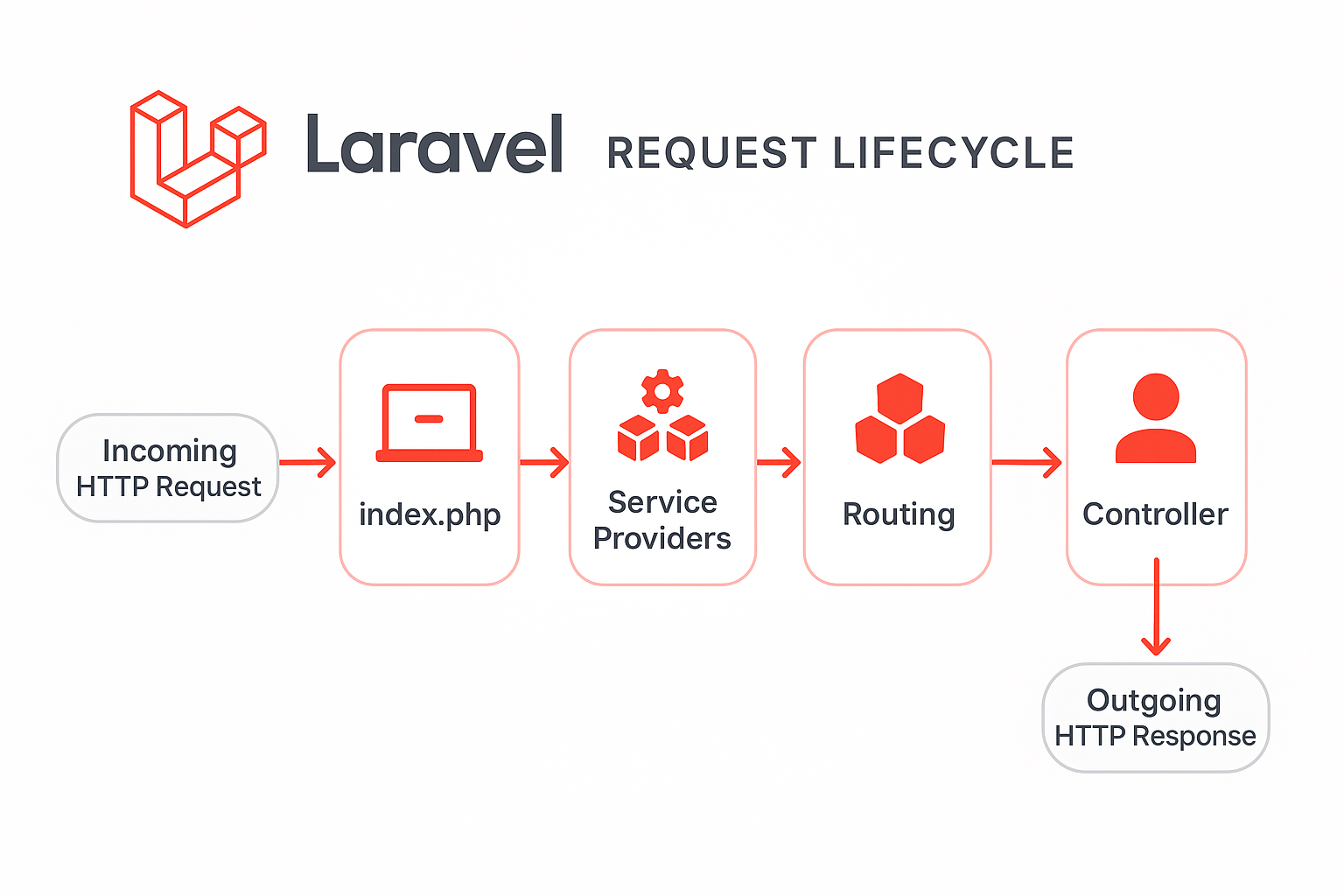
Laravel is a robust PHP framework that makes building web applications seamless. But do you know what happens behind the scenes when a client sends a request to your Laravel app? Understanding the Request Lifecycle is key to mastering Laravel development. Here’s a simplified breakdown based on Laravel's core concepts. 👇
The Flow: Step-by-Step 🛠️
- Client Request: 📥
The process begins when a client (e.g., browser) sends an HTTP request to your Laravel application.
- public/index.php: 📥
The entry point for all requests in a Laravel application is the public/index.php file, directed by the web server (Apache/Nginx). What Happens in index.php?
- Loads the Composer autoloader.
- Retrieves the application instance from bootstrap/app.php.
- HTTP / Consol Kernels: 📥
When a request enters the application, it is sent to either the HTTP Kernel (for web requests) or the Console Kernel (for CLI commands) via the handleRequest or handleCommand methods.
HTTP Kernel Responsibilities
The HTTP Kernel (Illuminate\Foundation\Http\Kernel) handles all HTTP requests and performs key tasks:
- Bootstrapping: Configures error handling, logging, and environment detection before processing the request.
- Middleware Stack: Passes the request through middleware to handle sessions, maintenance mode, CSRF verification, etc.
How It Works The HTTP Kernel's handle method accepts an HTTP Request and returns a Response.

- Service Providers: 📥
Service providers are critical for bootstrapping the framework's components, such as the database, queue, validation, and routing. How It Works
- Laravel iterates through the list of service providers.
- Calls the register method on all providers to bind services.
- Once registered, the boot method is called, ensuring all bindings are available.
Why Are They Important? Service providers configure and initialize almost every major Laravel feature, making them essential to the bootstrap process.
You can also create custom service providers. A list of registered providers can be found in bootstrap/providers.php.
- Routing: 📥
After bootstrapping and registering service providers, the Request is dispatched to the router. How It Works
- The router matches the request to a route or controller.
- Middleware filters or processes the request (e.g., checking authentication). Middleware
- Global middleware applies to all routes (e.g., PreventRequestsDuringMaintenance).
- Route-specific middleware applies to certain routes or groups. If the request passes through all middleware, the route or controller method executes, and the response is returned through the middleware chain.
- Finishing Up the Request Lifecycle: 📥
Once a route or controller method returns a response:
- The response travels back through the route's middleware for final modifications or checks.
- The HTTP Kernel returns the response to the application's handleRequest method.
- The response's send method delivers the content to the user's browser.
This completes the full Laravel request lifecycle, transforming a request into a response seamlessly. 🚀
To explore further, check out the official documentation 👉 Laravel Request Lifecycle
Understanding this flow helps you debug efficiently, optimize your app, and structure your code better. 💡
Tags:
By Shashika Nuwan
Founder of Zencemart
Shashika Nuwan is a seasoned Software Engineer and the Founder of Zencemart. With over 4 years of professional experience, he specializes in Laravel, React, and full-stack web development. Shashika is passionate about building innovative digital solutions and helping businesses grow through technology. He also enjoys contributing to the tech community by sharing knowledge and insights.